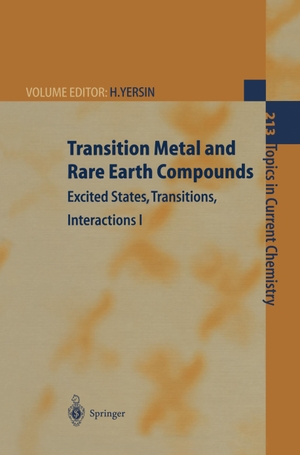Für statistische Zwecke und um bestmögliche Funktionalität zu bieten, speichert diese Website Cookies auf Ihrem Gerät. Das Speichern von Cookies kann in den Browser-Einstellungen deaktiviert werden. Wenn Sie die Website weiter nutzen, stimmen Sie der Verwendung von Cookies zu.
Cookie akzeptieren
Transition Metal and Rare Earth Compounds
- Springer Berlin Heidelberg
- 2012
- Taschenbuch
- 200 Seiten
- ISBN 9783642087585
For a long time, the properties of transition metal and rare earth compounds have fascinated chemists and physicists from a scientific view-point, and more recently also their enormous potential as new materials has been explored. Applications in different fields have already been realized or are under c- rent investigation, for example, new laser materials, IR to visible upconversion systems, compounds for photolithographic processes, systems involving pho- redox processes for solar energy conversion, new photovoltaic devices, chemical sensors, biosensors, electroluminescent devices (OLEDs) for flat panel display systems, supramolecular devices with wide-range definable photophysical properties, materials for energy harvesting, optical information and storage systems, etc. Metal complexes are
Mehr
Weniger
zzgl. Versand
in Kürze